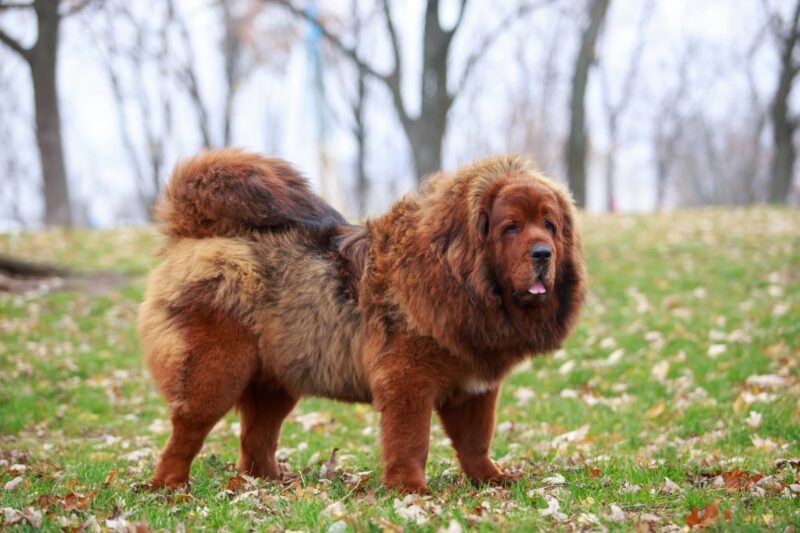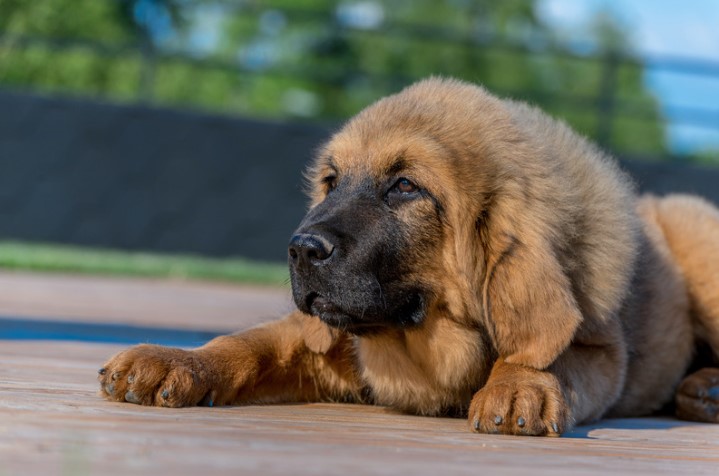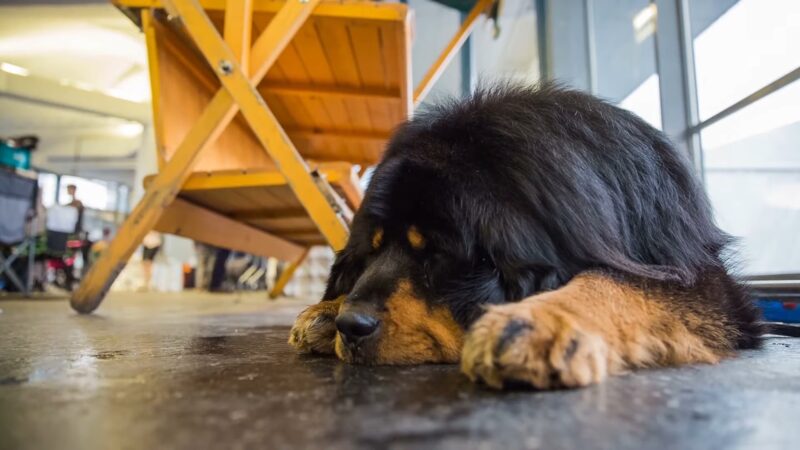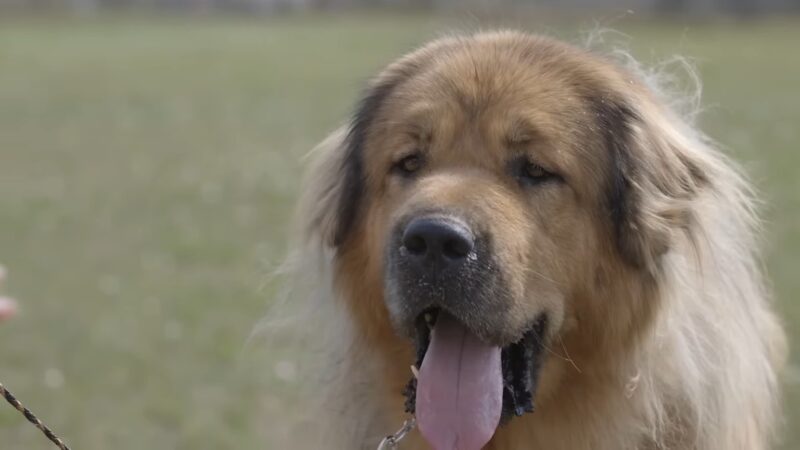The Tibetan Mastiff, a breed renowned for its majestic, regal presence and grand, thick coat, is a subject of great intrigue for many dog enthusiasts. As one of the largest dog breeds in the world, its rich double coat has been an effective defense mechanism against the harsh climates of its native Tibetan Plateau.
But with these impressive coats come grooming challenges, leading many to wonder, “Can you shave a Tibetan Mastiff?” This comprehensive article aims to provide a thorough understanding of this matter.
The Tibetan’s Mastiff Coat

Before jumping into grooming specifics, it’s essential to appreciate the nature of the Tibetan Mastiff’s coat. This breed has a dense double coat consisting of a soft, wooly undercoat and a long, thick outer coat. The undercoat provides insulation, while the outer coat acts as a barrier against snow, rain, and wind.
This ingenious evolutionary adaptation allowed Tibetan Mastiffs to survive in harsh Himalayan winters.
So, Should You Shave a Tibetan Mastiff?

The short answer is, ideally, no. Shaving a Tibetan Mastiff can actually be detrimental to their health and comfort. The reasons are twofold. First, their thick double coat is not only designed for protection against cold but also shields them from the heat.
The insulating undercoat can help maintain a stable body temperature, offering a natural cooling effect during hot months.
Secondly, shaving might cause the coat to grow back unevenly, which could potentially lead to skin issues. For some dogs, the undercoat may grow faster than the outer guard hairs, resulting in a patchy appearance. Furthermore, shaved skin is prone to sunburn and more susceptible to parasites and infections.
An Alternative: Proper Grooming Practices

So, if shaving is not advisable, how should one manage the luxurious coat of a Tibetan Mastiff? The answer lies in regular and effective grooming.
1. Regular Brushing
Brushing is the first line of defense in managing your Tibetan Mastiff’s coat. This process helps to distribute oils from the skin throughout the coat, maintain its health and shine, and remove any dead hair.
It’s advisable to brush your Mastiff at least once or twice a week, but during their shedding season – which typically happens once a year for this breed – daily brushing might be necessary.
2. Dealing with Matting
Due to the length and density of the Tibetan Mastiff’s coat, matting can be a concern. If left untreated, mats can lead to skin irritation and infection. Regular brushing can prevent mats, but for any that form, use a dematting tool or comb to gently remove them.
3. Bathing and Drying
Tibetan Mastiffs do not require frequent bathing – typically a few times a year will suffice unless the dog gets particularly dirty. Use a gentle dog shampoo to maintain the natural oils in their coat.
After bathing, it is crucial to dry the dog properly to avoid any moisture-related skin issues. Use absorbent towels and a blow dryer on a cool setting, making sure to completely dry the dense undercoat.
4. Professional Grooming Assistance
Due to their size and the complexity of their coats, professional groomers can be a valuable resource for Tibetan Mastiff owners. These experts can provide deep-cleaning baths, thorough brush-outs, and even careful trimming around the feet, ears, and tail if necessary.
5. Health Checks
While grooming, owners should also conduct health checks on their Tibetan Mastiffs. Examine the skin for any signs of redness, swelling, or parasites. Check their ears for any signs of infection and their nails to ensure they are not too long.
FAQs
How can I tell if my Tibetan Mastiff is shedding their undercoat?
Tibetan Mastiffs usually have a heavy shed once a year, a process sometimes called “blowing the coat.” You’ll notice an increase in loose hair around your home, and their coat might look less dense. The loose undercoat typically comes out in clumps, which is very noticeable during grooming sessions.
How can I keep my Tibetan Mastiff’s coat shiny?
Diet plays a significant role in keeping your Tibetan Mastiff’s coat shiny and healthy. High-quality dog food with the right balance of omega-3 and omega-6 fatty acids can help maintain a shiny coat. Additionally, regular brushing helps distribute the coat’s natural oils, contributing to its luster.
How often should I take my Tibetan Mastiff to a professional groomer?
The frequency of professional grooming depends on your ability and comfort level in managing your Tibetan Mastiff’s coat. Some owners might choose to take their dogs to a groomer every 3-4 months for a thorough clean and brush out, while others might only use professional services once or twice a year.
Are there any specific brushes that work best for a Tibetan Mastiff’s coat?
For a Tibetan Mastiff’s dense double coat, you would benefit from having a slicker brush, an undercoat rake, and a dematting tool. A slicker brush helps remove loose fur and dirt, an undercoat rake aids in managing the thick undercoat, especially during shedding season, and a dematting tool can help handle any mats or tangles that develop.
My Tibetan Mastiff seems to be itching a lot. Can this be related to grooming issues?
Excessive itching could be due to several reasons. If mats are forming in your dog’s coat, they could be causing discomfort and itching. Additionally, infrequent or improper bathing can lead to dry skin, causing itchiness. Parasites like fleas or ticks could also be a cause. If your dog is persistently itching, it’s best to consult with a veterinarian to identify the issue.
Are there any breed-specific grooming products for Tibetan Mastiffs?
While there may not be products specifically marketed for Tibetan Mastiffs, there are many products suitable for large dogs with double coats. These include specific types of brushes, as mentioned earlier, and gentle shampoos and conditioners formulated for dogs with thick or long hair. It’s always important to choose high-quality grooming products that can help maintain the health of your Tibetan Mastiff’s coat and skin.
Conclusion
While the Tibetan Mastiff’s coat is indeed a sight to behold, maintaining it requires dedication and effort. Despite the challenges, the consensus among professionals and experienced owners is clear: it is not advisable to shave a Tibetan Mastiff. Instead, regular and thorough grooming, coupled with periodic professional assistance, can help ensure that your Tibetan Mastiff remains as majestic and healthy as nature intended.
By adopting these practices, you’ll not only maintain your pet’s magnificent appearance but also reinforce the bond between you, ensuring your Tibetan Mastiff happy life. It’s essential to remember that every stroke of the brush, every gentle cleaning, and every meticulous checkup is a testament of your affection towards your Tibetan Mastiff. And that, dear reader, is the essence of responsible pet ownership.

